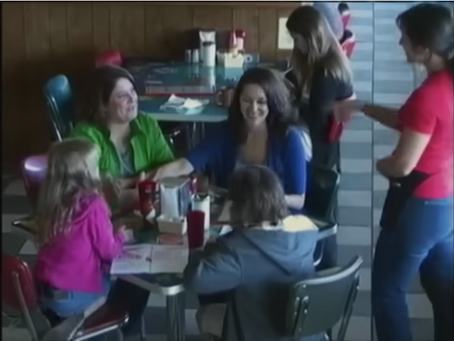top of page
Balanced Learning Resources
Lesson Plans
Search
Critical Thinking


Stopping Prejudice in its Tracks: Antisemitism in a Bakery
In this lesson, students watch the What Would You Do? segment “Antisemitism and Jewish Discrimination: What Would You Do?” which places unsuspecting bystanders in situations where Jewish people experience discrimination in a public setting. The video captures real reactions — prompting students to consider how prejudice can appear in everyday life and what moral courage looks like. As an extension to the video, students learn and role-play 10 Upstander Steps and become Upstan


Stopping Prejudice in Its Tracks: Same‑Sex Parents Denied Service
Students watch a hidden-camera scenario where a family with same-sex parents is refused restaurant service. Students identify what’s unfair, analyze how bystanders and upstanders respond, and practice (via role play) 10 Upstander Steps that are kind, safe, truthful, and inclusive. As students learn upstander skills, they discover how to make public spaces safer and more respectful for everyone.


Treating People Fairly
In this lesson, students use a kid-friendly Justice Checklist to spot unfair moments, find fair fixes, and practice kindness, safety, and inclusion through role-play.


Velvet Revolution (Czechoslovakia, 1989) - Analysis of a Social Justice Movement
Students apply 10 objective criteria to analyze a social justice movement that is widely noted for its non‑violent, dignity‑centered tactics: the Velvet Revolution in Czechoslovakia (Nov–Dec 1989). Using short videos and primary‑source snippets, learners test whether the movement’s goals, methods, and outcomes align with genuine social justice for all, or reveal red flags. By design, this lesson is based on students’ observations of video content and teacher‑neutrality: the 1


Dr. Martin Luther King Jr. & the March on Washington - Analysis of a Social Justice Movement
Students will examine the civil rights movement through two key films: Martin Luther King Jr.’s 1963 “I Have a Dream” speech and The March (1964), a restored documentary on the March on Washington. After viewing, students will use 10 criteria to evaluate whether the movement meets the standards of a true social justice movement—analyzing its stated goals and actions, commitment to equity and human dignity, openness to dissent, use of nonviolence, reliance on truth over propag


Analysis of a Current Movement: Free Palestine Protests
Grade Level: 9-10 Duration of video 1: 5 minutes Themes: Methods vs. slogans, Non-violence & human dignity, Media literacy & misinformation, Inclusion & democratic participation, civil rights and dignity for all people Description: This lesson invites students to evaluate the Free Palestine Movement’s protests through 10 Criteria to analyze a Social Justice Movement. Students will examine activist messaging that uses social justice language. By applying the 10 Criteria Frame
bottom of page
